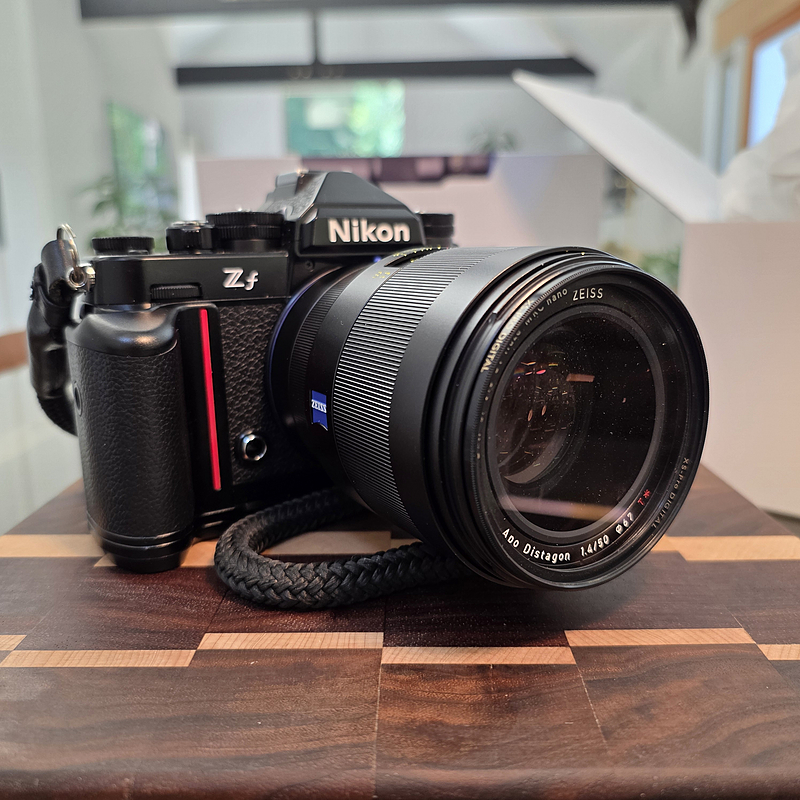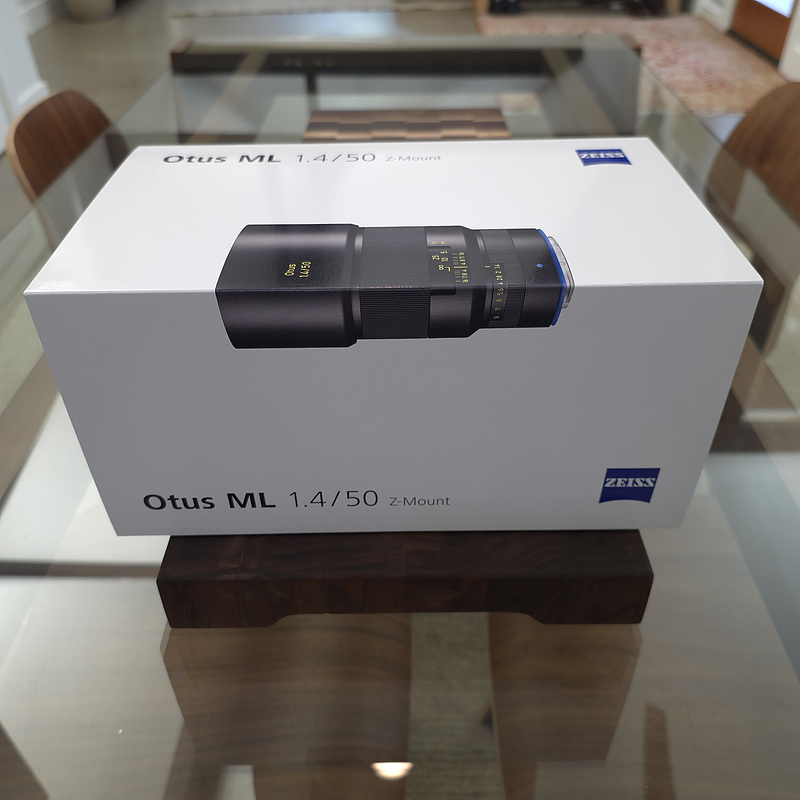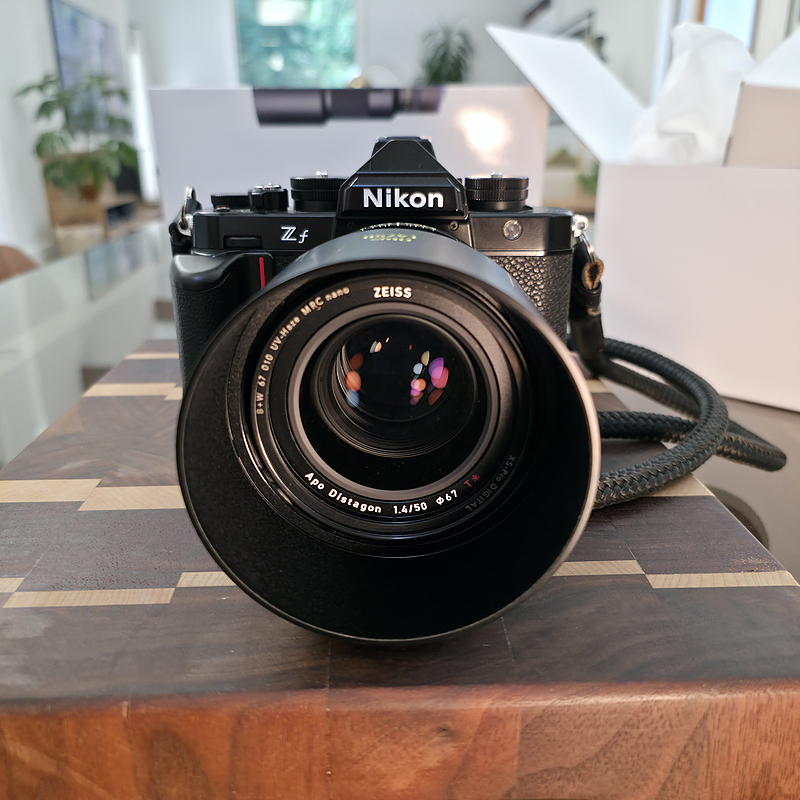The long awaited Otus for Nikon Z mount is finally here.



Introduction
Does it even need an introduction? In the world of photography, there are lenses that are simply good, and then there are lenses that are legends. The ZEISS Otus series has long occupied a space in the latter category, known for its uncompromising optical performance and meticulous build quality that has captivated photographers since it was introduced.
Originally designed for DSLR mounts, the Otus family represented the pinnacle of manual focus prime lenses. But with the rise of mirrorless technology and the subsequent evolution of camera systems, many wondered if ZEISS would bring its flagship glass to the new era r even be competitive again.
The answer is a resounding yes with the introduction of the Otus ML series. Optimized for the shorter flange distance of mirrorless cameras, these lenses are built to deliver the same legendary performance of the original in a more compact and modern design.
This review will delve into the ZEISS Otus ML lens for the Nikon Z mount where I captured the images here using my trusty ZF . I examine whether this manual focus lens, in a market dominated by autofocus systems, can still justify its premium price tag and its iconic status. I will explore its sharpness, color rendition, and how its unique character translates to real world shooting.
My approach to this review has been a personal one, focusing on the real experience of using this lens in everyday situations that fit my photographic style rather than a cold, scientific analysis. I'm not a lab technician, and this is not a review based on charts, graphs, or MTF data. While those metrics can provide a valuable, objective measure of a lens's performance, they often fail to capture the subjective qualities that truly define a lens such as its character, its feel, and the way it inspires you to create. Which is why I focus on real world application for my style of photography.
My observations are purely subjective and drawn from time spent with the lens in a variety of situations. The feedback I will be giving on its sharpness, bokeh, and build quality is based on my own visual assessments of the images it produces and posted here for you to view. I've looked at the transitions from in focus to out of focus areas, the rendition of fine details like fine hair on a portrait, and the overall aesthetic of the photographs. The experience of holding this lens, the tactile satisfaction of the focus ring, and the way it integrates with my now favorite camera, the Nikon Zf. This review is, at its heart, a testament to the experience taking photographs with a truly exceptional piece of glass.
Build
Holding this new Otus in my hands is an experience in itself. From the moment you unbox it, you're greeted with an object that feels less like a piece of consumer electronics and more like a precision engineered instrument. Or as I often call it, Mechanical Jewelry. The build quality is, in a word, extraordinary. Crafted from metal, giving it a substantial weight and a cold to the touch feel that immediately conveys durability and quality. This is not a lens that feels flimsy or plasticky like so many others do. This lens feels like perfectionin your hands.
Resolving power
For this review, all of the test images were captured using my Nikon Zf. The Zf, while a fantastic camera, only features a 24.5-megapixel sensor, which in my opinion is a resolution that is more than sufficient for a wide range of photographic applications. However, the true mettle of a lens like the Otus is often revealed on the most demanding of sensors.
With that said, the optical design of this new Otus is so sophisticated ( according to those charts I don't look at ) and its resolving power so high that it is designed to surpass the limitations of even today's highest megapixel cameras. Had these images been captured on a higher resolution body, such as the Nikon Z8 or Z9 with their 45.7 megapixel sensors, I am confident the Otus would not only meet the challenge but likely excel even further.
The lens's ability to render detail and its phenomenal sharpness are qualities that truly come into their own when paired with a sensor that can fully exploit its resolving capabilities. Just have a look at some of the details in the street portraits I captured with a 24MP camera.
Rendering
A defining characteristic of a premium lens is not just its sharpness, but also the quality of its out of focus areas, or bokeh. This gorgeous lens excels in this regard, producing a rendering that is both creamy and three dimensional, often referred to as the "Zeiss 3D Pop." I'm sure you have heard of "Leica Glow" might as well use "Zeiss 3D Pop" for a Zeiss review.
At its widest aperture it delivers a beautifully shallow depth of field, elegantly separating your subject from the background. The bokeh is remarkably smooth with soft, round highlights thanks to the lens's ten blade aperture diaphragm.
This design, combined with an apochromatic correction, ensures that there is no distracting color fringing in the out of focus areas, a common imperfection in lesser lenses. The transition from sharp to blurred is gentle and fluid, avoiding any harsh or distracting structures that can be seen in lenses with less corrected spherical aberration.
Note: For some of you that have read reports about visible LoCa, there is an interesting video that goes into some detail about a review with an version of the lens whne first introduced and a production version. The details can be found starting at 5 minutes 55 seconds here:
As you stop down the lens, the character of the bokeh remains pleasing. The 10 aperture blades maintain a very round shape even at smaller apertures, ensuring that out of focus light sources retain a pleasing circular form rather than turning into ugly polygon shapes.
Sharpness and Contrast
The core philosophy behind the Zeiss Otus line when first introduced back in the day for SLR's and DSLR's is the pursuit of absolute optical perfection, and this is most evident in its sharpness and contrast. This lens is designed with an apochromatic optical formula, which corrects for chromatic aberration. This correction is a significant factor in the Otus's reputation for producing images with exceptional contrast and vivid color fidelity.
Right from its maximum aperture of 1.4, the Otus delivers razor sharp results in the center of the frame. This isn't just about high resolution, it's about the way the lens renders the finest details with a biting, almost three dimensional clarity. The "Zeiss 3D Pop" ( There , I used it again. My own word salad. ) isn't a marketing gimmick. It's real! Even in black and white renderings, it delivers that pop!
Stopping down the lens even slightly, to f/2 or f/2.8, brings a further boost to already outstanding sharpness, with the entire frame becoming clinically sharp from edge to edge.
The lens renders blacks with a deep, rich intensity and highlights with a clean, clear precision. This high contrast and resolution, combined with the apochromatic design, ensures that your images are not only incredibly detailed but also possess a visual punch that is distinctively Zeiss.
While some modern lenses rely on in camera corrections to achieve a similar level of performance, the Otus is designed to be optically flawless, delivering its remarkable sharpness and contrast without any digital trickery.
There is a slight bit of vignetting when shot wide oen that can easily be corrected in processing.
Can it be used for street photogrpahy or street portraits?
As a street photographer, I often find myself drawn to lenses that are discreet and compact, allowing me to blend in with the environment and capture candid moments without drawing attention. The Otus with its substantial size and weight, initially seems to run counter to this approach. In a market where many 50mm 1.4 lenses have become increasingly compact, the Otus is a notably large lens but much smaller than the original versions. Compared to modern autofocus equivalents, it is often wider and longer, giving it a commanding presence on the Nikon Zf body.
This size and weight, while a testament to its robust build and complex optical design, can be a minor hindrance in fast paced street photography. It's a lens that people notice, and its manual focus requires a more deliberate, slower pace. You won't be capturing fleeting moments with lightning speed like you would with an auto focus lens.
Here it is compared in size to a Voigtlander 50MM 1.O Nokton and a Voigthlander 50MM F2 APO Lanthar. I did not throw in the Nikon 50MM 1.2 AIS since my chopping board ran out of space.

However, this approach can also be a strength. The large, smooth focus ring is a joy to use, encouraging you to slow down, compose carefully, and truly connect with your subject. While it may not be a walk around lens in the traditional sense, its incredible image quality makes it a highly rewarding tool for street portraits. It's a lens that demands your full attention, but in return, it rewards you with images that possess a unique character and a level of detail that is simply not achievable with smaller lenses. Regardless, while its size may make it a less than stealthy option for you rangefinder fanboys including myself, the Otus is far from unusable for street photography, and its performance can elevate your work in a way that few other lenses can.
Here are some sample from the streets of Portland. The majority of these images were captured at a fairly wide aperture just to demonstrate the optical performance of the lens even when shooting street photography which typically works best when the lens is stopped down.
Some other samples from the streets of Portland
Compared to others
While the Otus is a standout performer, it's important to place it within the context of the larger lens market, particularly when considering some of its most formidable rivals such as the Nikon Nikkor Z 50mm f/1.2 S and the Sigma Art series of 50mm f/1.4 lenses which are also large lenses.
The Nikon Nikkor Z 50mm f/1.2 S is arguably the most direct and modern competitor. It too is a massive, premium lens designed for the Z mount with an amazing build quality that stands up to the demands of professional use. The primary difference, of course, is the inclusion of an autofocus system. For a wedding photographer or anyone shooting in dynamic situations, the Z 50mm 1.2 S's ability to lock onto a subject's eye and track it with precision is a distinct advantage that the Otus, by design, simply cannot match. Additionally, Its 1.2 aperture also offers an even shallower depth of field and better low light performance but only by 1 stop. In this case this lens exhibits a unique rendering that is distinctly Zeiss, a quality many photographers find more aesthetically pleasing than the clinically perfect, but sometimes less characterful, look of the Nikon.
The Sigma Art series presents a different kind of challenge. These lenses have earned a reputation for delivering phenomenal optical performance at a significantly lower price point. The Sigma 50mm 1.4 Art, for instance, offers a very similar maximum aperture to the Otus. The key difference lies in the design philosophy. The Sigma combines a high speed autofocus motor with an optical design that leverages in camera corrections to achieve its impressive performance. In contrast, the Otus is an entirely manual, all metal lens built to achieve optical perfection purely through its glass and mechanical engineering, without reliance on digital assistance.
So, is it worth it ?
You ge what you pay for. One of the most immediate and undeniable aspects of the Otus is its price tag. At around $2,499 for the 50mm, it is significantly more expensive than many other 1.4 lenses available for the Nikon Z mount. This price point naturally raises the question, is it truly worth it?
The answer lies in understanding the core philosophy behind the Otus series and what you are paying for. While the market has seen an influx of very affordable lenses from manufacturers, particularly those from China which are flooding the market, the Otus operates in a completely different league. These budget friendly options have gained attention for their attractive pricing, but the Otus is not a lens that competes on cost. It is a lens for those who seeking uncompromising optical perfection above all else. Not to mention, have you seen the resale price of some of the cheaper Chinese made lenses? Pennies on the dollar compared to their original price.
The difference is in the details, the meticulous hand assembly, the use of exotic glass elements, the extensive apochromatic correction that eliminates color fringing, and the flawless mechanical precision of the all metal focus ring. The Otus is designed to be optically perfect, requiring no in camera correction, a level of engineering that comes at a substantial cost. In this case, the old adage "you get what you pay for" rings true. The Otus is not just a lens, it's a professional tool designed for those who demand the absolute best and are willing to pay for the hand crafted precision and optical superiority that sets it apart from the rest of the market. So with tht said ...

Full disclosure
For those of you reading that think this may sound a bit bias, I've been a long time user of the first generation Otus and have always been extremely impressed with its performance and build quality. My experience with that lens was so favorable that it may influence my perspective on this new model. However, I believe that the improvements made in ML version in addition to the advantage of an EVF aid from mirrorless cameras and smaller size and weight, are significant enough to warrant a glowing recommendation. While my past experiences may make me a bit more forgiving of any minor flaws, I can confidently say that this updated lens is a noticeable step forward and an exceptional piece of equipment."
Conclusion
When I first held this beast, I had high expectations. The Otus line has a legendary reputation, and its price point puts it in the same league as some of the most exclusive lenses on the market. I've been fortunate enough to use a wide variety of lenses over the years, including several from Leica, which are often considered the gold standard for mechanical precision. But I must say, the focusing experience with the Otus is in a class of its own.
The focus ring is a marvel of engineering. It's not just smooth, it's frictionless, yet perfectly damped. There's a resistance that feels both substantial and effortless. Each minute adjustment feels deliberate, allowing for a level of precision that I've simply never encountered before.
To put it simply, in all my years of shooting, and with all the glass I've had the pleasure of owning and using, As Ancient Astronaut Theorists would say, nothing, not even Leica lenses come close to the otherworldly mechanical perfection of this new Otus.
Now, I'll grant you this, the focus throw, from the minimum focus distance to infinity, is a significant turn. It's a rotation that feels longer than what you'll find on most modern autofocus lenses. But this is not a drawback, it's a feature. This extended throw allows for an incredibly fine degree of control. When you combine this with the focus confirmation on a body like the Nikon Zf, the results are simply astounding. The visual feedback you get, that little green dot lighting up just as you hit absolute peak focus, validates the precision you're feeling in your fingertips.
But beyond the mechanics, there's that rendering. It's a quality that's hard to put into words, a look that is simply unmatched by any other lens I've used. Many lenses create beautiful bokeh, but the Otus doesn't just blur the background, it dissolves it into a smooth, creamy backdrop that makes your subject leap off the screen. I've had the pleasure of using a Noctilux, a lens two full stops faster, and even it doesn't achieve the same buttery smooth quality in its out of focuse areas. The Otus bokeh is unique, with no harsh edges or distracting shapes, just a velvety softness that enhances every shot.
Yes, it's a heavyish lens. It's not one you'd casually throw in your bag. But the moment I saw the images it produces, I knew its size and weight were a non issue. What the lens delivers in terms of contrats, color, detail and in my opinion, the unmatched bokeh... for me, it's a complete no brainer. Without a doubt, this will be my main 50mm lens for years to come.
Simply put WOW !
Make sure you view the story about this lense's bokeh The Otus Bokeh, a marvel in optical design
For more Otus images visit www.ZeissOtus.com
Update 08-08-25
Some people have been asking to see how the lens renders bokeh balls such as lights at 1.4 and 2.0 or 2.8. The following were taken this evening in the Hawthorne district of Portland. Let me say this again. Nothing comes close to the performance of this lens wide open !
First one is at F1.4, 2nd at F2.2
No dumb questions . All good.
This site is all about zeiss lenses.
If you want to see batis pictures, click on Search from the top menu then search by lens and select the batis you are interested in.
By the way, here are some Batis 135 shots here on Zeissimages Batis 135